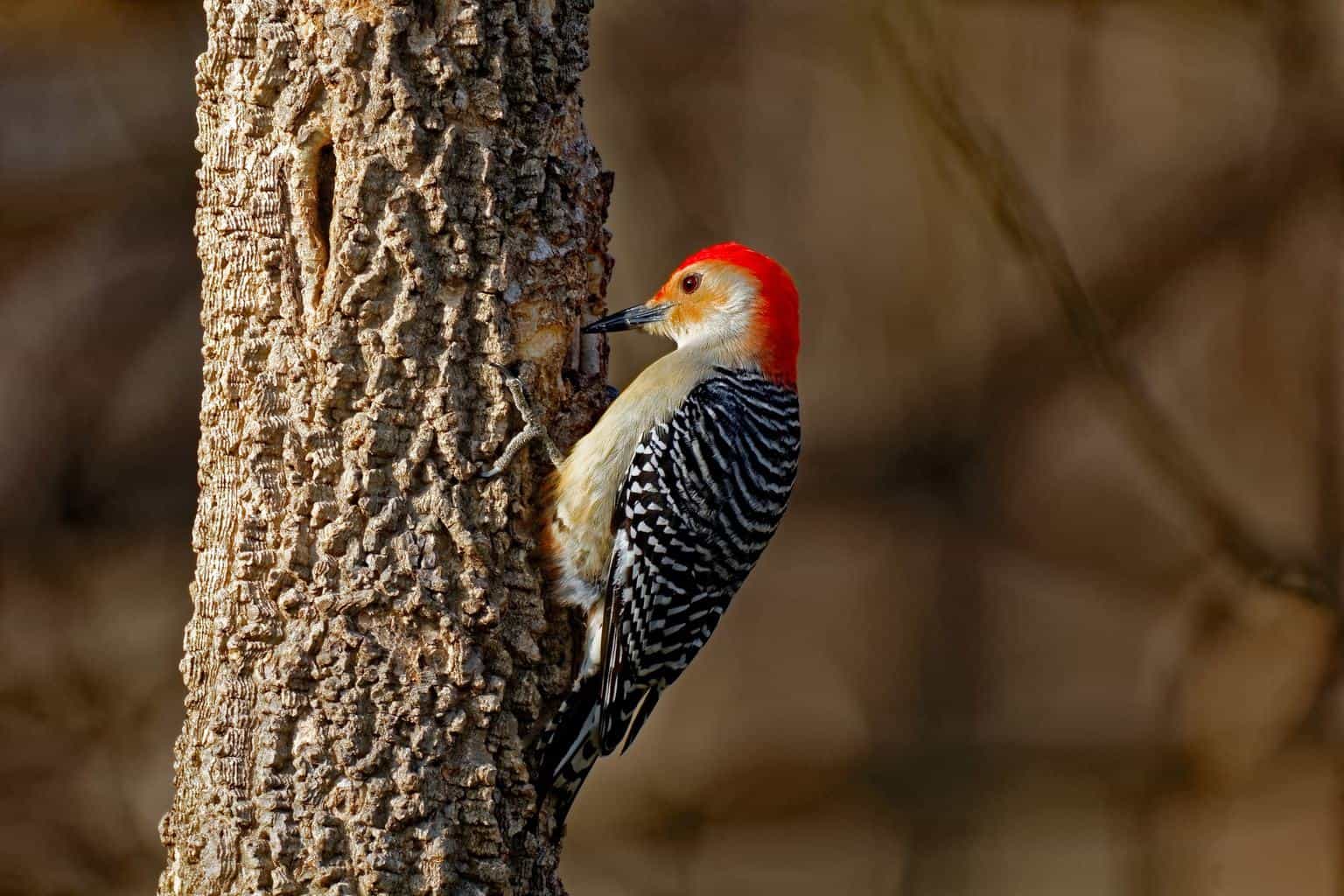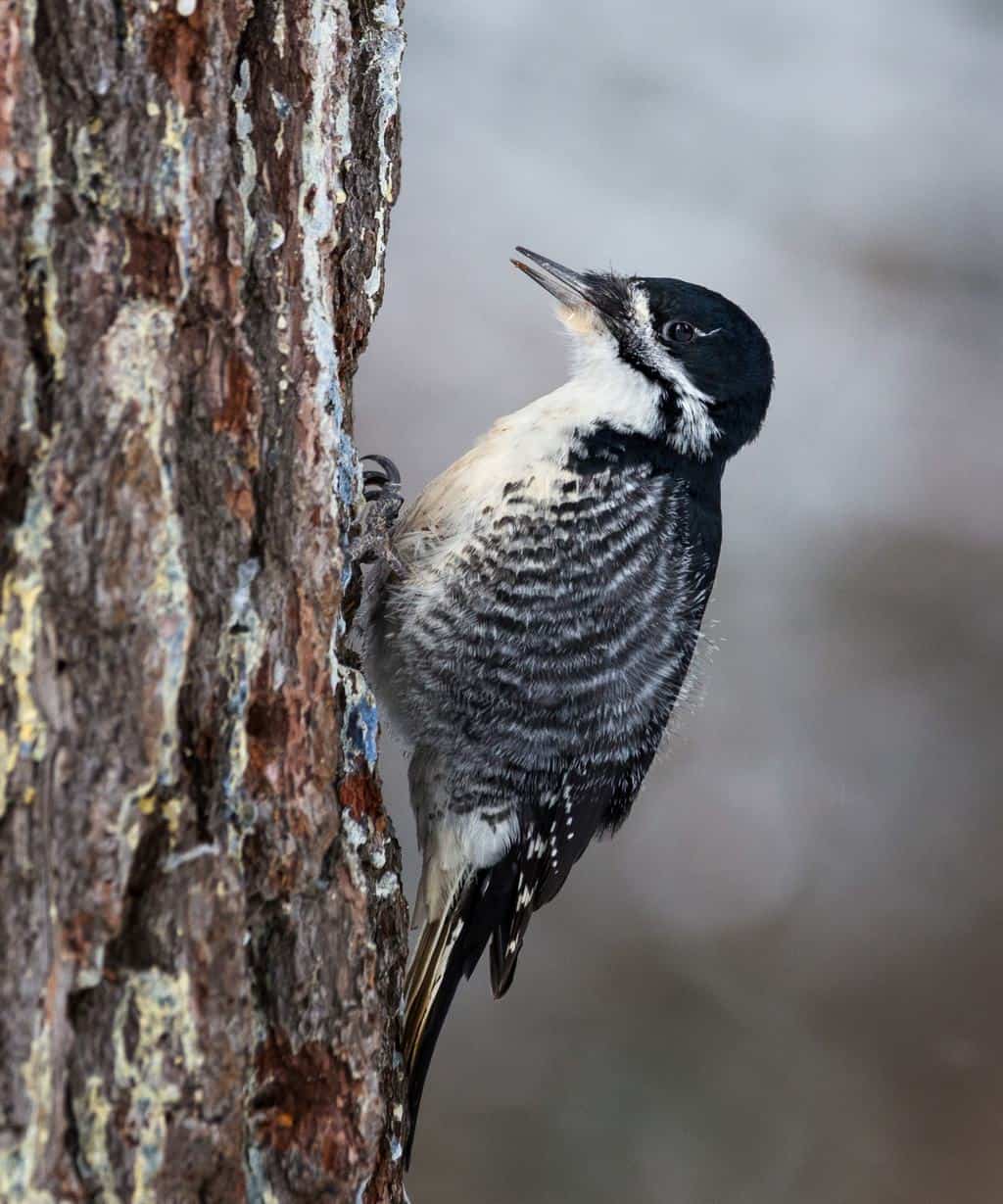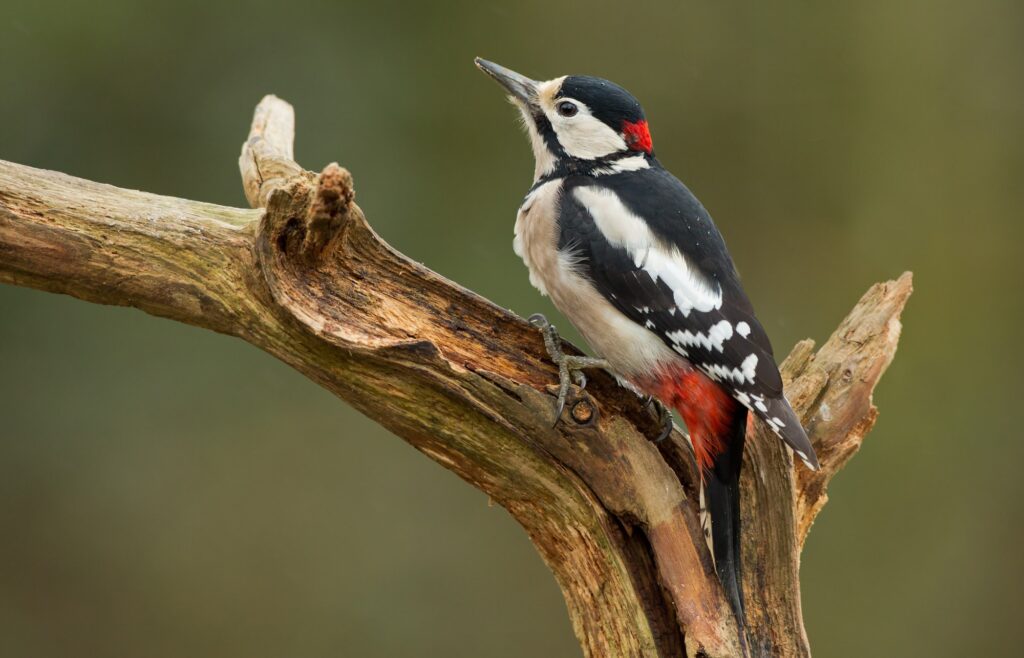Did you know Pennsylvania’s name translates to Penn’s Woods?
Out of the 45,888 square miles, there are 2 million acres of forest districts, along with nearly 300,000 acres of national parks. So, there’s no better naming for America’s Keystone state!
The state is home to 8 species of woodpeckers, while the rest of America hosts the remaining 14. The birds are a major contributor to the tourists’ interest in the states.
Bird-enthusiasts love watching the stiff tall feathers of woodpeckers, along with their colorful caps. If you’re one of them, check out this list of woodpeckers in Pennsylvania!
Downy Woodpecker

- Scientific Name: Dryobates pubescens
- Length: 5.5–7 inches
- Weight: 0.7–1 ounce
- Wingspan: 10–11.8 inches
Downy Woodpeckers are considered the smallest species of woodpeckers in North America. The males and females are mostly similar, except for the red patches on the males’ heads.
That being said, Downeys that live in the west are darker than the ones in the east. Regional differences are normal in some bird species, and this one is pretty apparent.
Downy woodpeckers stay in their territories all year long. Their diet mainly consists of insects, nuts, dried fruits, and some seeds.
Hairy Woodpecker

- Scientific Name: Dryobates villosus
- Length: 7–10.2 inches
- Weight: 1.4–3.4 ounces
- Wingspan: 13–16.1 inches
Hairy woodpeckers and downy woodpeckers are twins, except that hairy ones have a larger size. You probably won’t identify them at a first glance.
Hairy woodpeckers’ range extends to Central America. It passes through northeast Canada and Alaska, and it spreads as far as west to California.
Attracting hairy woodpeckers is easy; you only need some sunflower seeds, suet, and dried fruits. However, they mostly prefer insects, so you won’t find them at your feeder often.
Red-Bellied Woodpecker

- Scientific Name: Melanerpes carolinus
- Length: 9.4 inches
- Weight: 2–3.2 ounces
- Wingspan: 13–16.5 inches
Don’t let their name trick you; red-bellied woodpeckers actually have pale coloration. The only red they have is in their heads, but the naming comes from the constant blushing in their bellies.
Red-bellied woodpeckers don’t leave their territory, no matter what time of the year it is. They store their food through summer to keep themselves fed in winter.
You can easily attract red-bellied woodpeckers by laying sunflower seeds and peanuts around. Additionally, they’re mostly present in dead trees, so you won’t find it hard to get to them.
Red-Headed Woodpecker

- Scientific Name: Melanerpes erythrocephalus
- Length: 7.5–9.1 inches
- Weight: 2–3.2 ounces
- Wingspan: 16.5 inches
Red-headed woodpeckers are true to their name, unlike red-bellied ones. They have bright red heads that make them stand out in a crowd. Additionally, their backs have black and white patches.
Unlike all the other Pennsylvania woodpeckers on our list, red-headed ones don’t remain in their territory throughout the year. They migrate south during the winter.
Furthermore, red-headed woodpeckers mostly stay in open habitats. They love being on-watch for flying insects! They also feed on nuts, seeds, and fruits.
Pileated Woodpecker

- Scientific Name: Dryocopus pileatus
- Length: 15.8–19.3 inches
- Weight: 8.8–12.3 ounces
- Wingspan: 26–29.5 inches
Pileated woodpeckers are hard to spot, although they’re the largest species in North America. They also have unique bodies, courtesy of the crimson crest that adorns their heads.
You can attract pileated woodpeckers by laying suet for them, but they’ll hardly respond. If you want to look for them, start with searching for rectangular holes on dead trees.
Pileated woodpeckers take dead trees and fallen logs as their refuge. They feed on carpenter ants, beetles, larvae, and termites. They may also eat nuts and fruits.
Northern Flicker

- Scientific Name: Colaptes auratus
- Length: 11–12.2 inches
- Weight: 3.9–5.6 ounces
- Wingspan: 16.5–20.1 inches
Northern Flickers are distinct from all other woodpeckers in Pennsylvania. Instead of living on trees, you’ll find them digging in the ground most of the time.
You won’t find them at your feeder often, as they prefer open lawns and fields.
Flickers also have a unique shape; they have spotted backs and bellies, along with colorful heads. The ones in Pennsylvania mostly have yellow feathers.
Northern Flickers migrate with red-headed woodpeckers in the winters. They all travel south.
Black-Backed Woodpecker

- Scientific Name: Picoides arcticus
- Length: 8.6–9.4 inches
- Weight: 2.1–3 ounces
- Wingspan: 16 inches
Black-backed woodpeckers are nonmigratory, so you’ll always find them in their territory. However, they sometimes move out of the woods in cold months.
They appear in April and May more frequently than the rest of the year.
You’ll find black-backed woodpeckers digging through trees most of the time. They feed on larvae that they extract out of the trunks.
Plus, they build their nests in dead trees. They hide the nests pretty well, though. You’ll have to spend some time looking for them.
Yellow-Bellied Sapsucker

- Scientific Name: Sphyrapicus varius
- Length: 7.1–8.7 inches
- Weight: 1.5–1.9 ounces
- Wingspan: 13.4–15.8 inches
Yellow-bellied sapsuckers live in southeastern Pennsylvania. They sometimes migrate to the northeast during summer because it’s their breeding season, but not all of them do.
The birds feed on the sap inside the trees; that’s why you’ll find them drilling holes in trees most of the time. Their diet includes insects and some dried fruits as well.
You’ll only see yellow-bellied sapsuckers in your backyard if you have sap-producing trees. They may also get attracted to suet. Other than that, they’ll stay in the woods.
Closing Thoughts
If you live in Pennsylvania, you’ll likely come across woodpeckers at least once in your lifetime. As you saw in the list, most of them are easy to attract to your feeders.
As for the ones that don’t come by, you can always trek to the woods and look for them yourself. Just don’t forget to carry some nuts and dried fruits!
The 8 woodpecker species that live in Pennsylvania have beautiful looks. You’ll be lucky to find one drilling in a tree nearby!





















